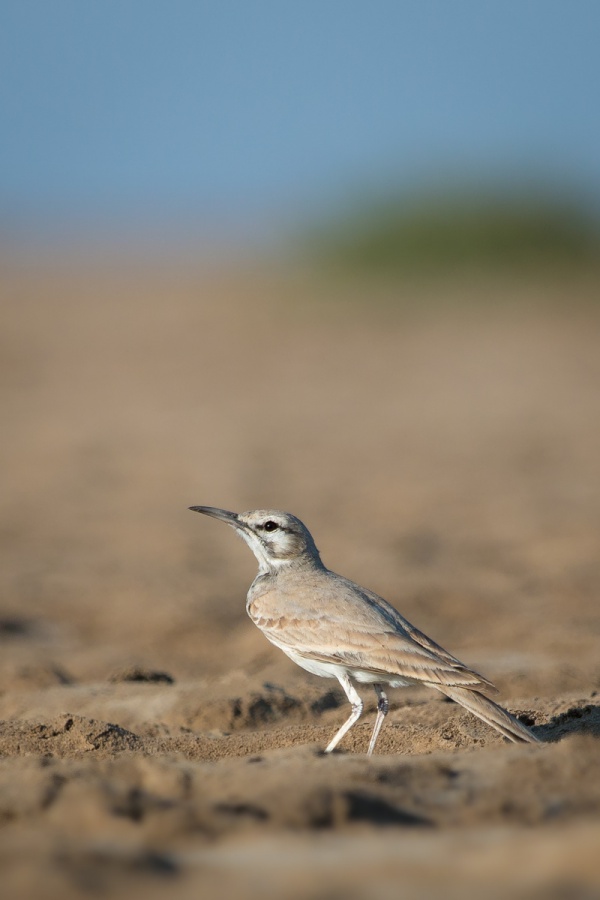Facts About Greater hoopoe-lark
The greater hoopoe-lark, previously known as the bifasciated lark or large desert lark, is a captivating bird thriving in the arid and semi-desert regions of northern Africa, the Arabian Peninsula, and parts of Asia. This bird has undergone various classifications but is now firmly established in the genus Alaemon. There are four recognized subspecies, each uniquely adapted to its environment.
Visually, the greater hoopoe-lark is particularly striking. It is a large, long-legged bird with a distinctive down-curved bill. Its dark facial markings, speckled breast, and sandy-grey upperparts make it easily identifiable. Although males and females appear similar, there are slight differences in their size and markings.
In their quest for food, these birds are adept ground foragers. They run or walk across the terrain, probing and digging for sustenance, which includes fungi, insects, invertebrates, lizards, and seeds. The breeding season commences after the first rains, with males performing impressive aerial displays and emitting distinctive calls to attract mates.
Their nesting habits are equally fascinating. They construct cup-shaped nests from small sticks, placed either on low bushes or directly on the ground. Both parents share duties in incubating the eggs and feeding the young. Remarkably, these birds have adapted to their harsh environment by using burrows for shelter and regulating water loss through their skin. However, their breeding success is closely tied to rainfall, and they may forgo breeding during particularly dry years.
The wide distribution of the greater hoopoe-lark has led to the evolution of distinct subspecies in different regions. These subspecies inhabit areas such as the Cape Verde Islands, the North African Sahara, the Red Sea coast, and eastern locales like Iraq, Pakistan, and northwestern India. Each subspecies has adapted to its specific geographic location, making the greater hoopoe-lark a remarkable example of nature’s adaptability.

 United Arab Emirates
United Arab Emirates